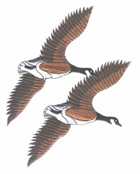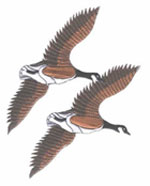Map Source
16th century Sao Tome was colonised by the Portuguese, who brought in slaves to work in the sugar plantations. It became an important staging post for the slave trade.
1800s Cocoa was introduced. Sao Tome developed into one of the world's main cocoa producers.
1951 It became an overseas province of Portugal.
1960 Saw the formation of the nationalist group which later became the socialist oriented Movement for the Liberation of Sao Tome and Principe (MLSTP).
1974 After a Military coup in Portugal. The Portuguese government recognised the islands' right to independence, acknowledged the MLSTP as sole representative in negotiations. Unrest followed by an exodus of the Portuguese.
12th July 1975 Independence was granted, with Manuel Pinto da Costa (MLSTP) becoming the first president, and Miguel Trovoada as prime minister. The Plantations were nationalised, while strong ties built up with communist countries.
1978 The Government announces the suppression of a coup attempt, and brought in Angolan troops for support.
1979 Trovoada was arrested and accused of complicity in the coup attempt. He was released and went into exile in 1981.
1980s The Government scaled down its links with the communist world as its economy deteriorates, later declaring itself nonaligned, while seeking Western support for its recovery plans.
1988 saw a Coup attempt.
1990 A new constitution allowed opposition parties, provided for multi-party elections and restricted presidents to two five-year terms. Trovoada returned from exile.
1991 First multiparty elections. Renamed MLSTP-PSD lost its majority. A transitional government was installed, pending presidential elections, subsequently won by independent candidate Trovoada.
1992 Saw a unrest in the country sparked by austerity measures.
1994 MLSTP-PSD regains power. Parliament grants Principe local autonomy.
1995 Trovoada was toppled and detained in a bloodless coup led by soldiers but is reinstated within days after pressure from donor countries.
1996 Trovoada was re-elected president. followed by Popular protests over economic hardships.
1997 Unrest over economic conditions. Sao Tome established formal diplomatic relations with Taiwan at Trovoada's behest. The move was condemned by the government. China retaliates by suspending its ties with the country.
1998 MLSTP-PSD won the general election, Guilherme Posser da Costa was appointed prime minister.
2000 Civil servants went on strike to press for higher pay. Officials reported the country's external debt in
1998 amounted to US $270 million, more than five times the country's annual gross domestic product of around US $50 million.
2001 Businessman Fradique de Menezes was declared the winner in the presidential election in July and was sworn into office in early September.
March 2002 MLSTP narrowly won the parliamentary elections. De Menezes appointed Gabriel Costa as prime minister and both main political parties agreed to form a broad-based government.
August 2002 President De Menezes announced plans for a US naval base in the country, which would protect Sao Tome's oil interests.
October 2002 President De Menezes named his new government with Maria das Neves as premier. It replaced an administration led by former prime minister Gabriel Costa, which was dismissed by De Menezes in September.
16th July 2003 A Military coup toppled the government. President De Menezes, in Nigeria at the time, returned to Sao Tome a week later after an agreement was struck with the military junta. A general amnesty was granted to the coup leaders.
2003 October Oil companies were allowed to bid for offshore oil blocs controlled by Sao Tome and Nigeria. The bids were expected to generate hundreds of millions of dollars in licence money for Sao Tome.
March 2004 A row between the president and prime minister over control of oil deals threatened to topple the government. Four cabinet ministers were replaced.
September 2004 President De Menezes sacked the prime minister and government after learning of a series of corruption scandals, and a new prime minister is sworn in.
December 2004 Parliament approved an oil law designed to protect revenues from corruption.
February 2005 February Sao Tome along with Nigeria signed its first offshore oil exploration and production-sharing agreement with international oil firms.
June 2005 The Prime minister and government all resign. Head of the central bank Maria do Carmo Silveira became the new premier.
March 2006 Protests against poor living conditions disrupted parliamentary elections in some constituencies, delaying announcement of the results. The president's Democratic Movement of Forces for Change (MDFM) was declared winner, taking 23 of the 55 seats in parliament.
March 2007 The IMF World Bank forgive a $360 million in debt owed by Sao Tome. This represented about 90% of the country's foreign debt. Nigeria and Sao Tome agreed to establish a joint military commission to protect their common oil interests in the Gulf of Guinea.
February 2008 Opposition leader Patrice Trovoada became prime minister.
May 2008 Prime Minister Patrice Trovoada was dismissed after a no-confidence vote.
June 2008 The head of Sao Tome's second largest party Rafael Branco, was sworn in as prime minister at the head of a new governing coalition.
December 2008 Several high-ranking former government officials, including two ex-prime ministers, appeared in court in Sao Tome's largest corruption scandal.
February 2009 The government announced that another attempted coup had been foiled.
December 2009 Nigeria and Sao Tome agreed to set up a joint maritime military commission to protect offshore crude oil fields.
January 2010 The opposition leader Arlecio Costa was jailed over the February 2009 coup plot, and was pardoned.
March 2010 Sao Tome opened tenders for oil exploitation.
August 2010 The opposition Independent Democratic Action (ADI) party won the parliamentary elections. Patrice Trovoada became premier.
Source
www.news.bbc.co.uk/2/hi/africa/country
Articles of interest



